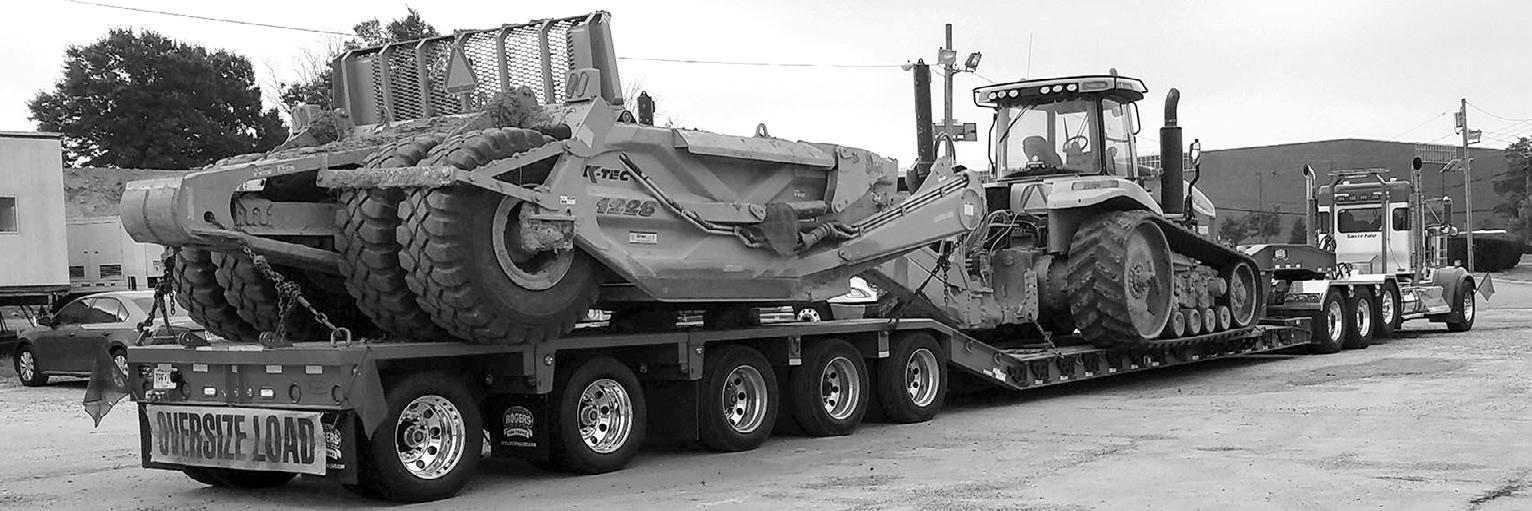
3 minute read
NEW ENGLAND SUPPLEMENT ADVERTISER INDEX Crews Relocate Every Existing Utility Within Project Footprint
Utilities have been an issue.
“We had to relocate every existing utility within the footprint of the garage, including water, sewer, fiber optics,” said Caulfield. “We also had to relocate the storm drain system including a five-foot diameter main truckline that was 25 feet below street elevation.”
Day shifts are the norm, with some work being done on Saturdays.
The garage itself, which has been put together over 16 weeks, required approximately 800 pieces of precast concrete. They were delivered by truck and lifted and placed using a 330-ton capacity crane.
“They were connected by welding metal plates together and holes for anchor bolts,” said Caulfield. “But precast can’t solve all the issues. The garage had to be smooth to drive on and also for rainwater to be controlled into the drainage system.”
Structural steel was installed for the elevator shaft and it has been painted with fireresistant paint.
“We are in the process of installing glass and the roof at the elevator tower,” said Caulfield. “The challenge of the shaft was building within a short distance of the railroad’s electrical power infrastructure. We’re working with the railroad and informing it of our schedule. On many occasions, they would shut the power in those areas so we could work. We have very good relations with the Metro North Railroad.”
Equipment used for the installation of the garage includes excavators, front-end loaders, excavators and dozers, mostly Cat models.
The installation of the support steel installation for the architectural facade is ongoing, but the location presents challenges, including the road leading to the garage.
“It is very difficult to install the architectural treatment around the building,” said Caulfield. “It’s hard to get cranes and other pieces of equipment in close proximity to the work. So instead, we chose mini-cranes that go on the roof of the garage. We also use the garage roof as an area to store material.”
The new office space is located on the ground floor of the garage. Electrical, plumbing, HVAC and other services are being installed now.
“This work should be completed in the next few months,” said Caulfield.
The installation of the pedestrian bridge should be finished by late June. The pier construction was completed in January.
“There are three cast-in-place piers,” said Caulfield. “We placed the concrete with the anchor bolts placed at the correct elevations. The bridge is about 320 feet long and it’s going to come in six large pieces. Blue Atlantic from Massachusetts is currently fabricating and delivering the bridge. A crane will set each piece and then it will be connected together as we erect it.”
It should take a week to build the bridge, with the pieces shipped and lifted immediately.
The Yonkers management team is working with many partners.
“Our design firm has a lot of people working on the project,” said Caulfield. “We have a lot of people from the engineering firm on site. Our staff has worked on many projects. The efforts of the crews are good. The guys in the field are union employees and we work with the unions for the laborers, carpenters, iron workers and operating engineers. We have our engineers working with the crews and our staff procures the materials and has them delivered. It requires a lot of coordination to build a facility like this.”
Peak days have approximately 50 people on site, with major subcontractors being McPhee Electric for all the electrical work, MJ Daly for the plumbing and HVAC work and Blakeslee for precasting and erecting the garage structure.
Work activities should generate 25,000 tons of earth and rock. For the most part, materials cannot be recycled on site.
“Some of the earth that is excavated goes to a temporary stockpile off site where it is tested,” said Caulfield. “Whether it is contaminated, hazardous or non-hazardous, it goes to licensed facilities that handle it.”
In terms of new materials, 20,000 cu. yds. of concrete, 1,000 tons of steel, 3,000 tons of asphalt and 5,000 tons of subbase will be used.
Additional equipment being used includes dirt and asphalt rollers, asphalt paving machines, mostly manufactured by Cat.
“We have our own mechanic that is on site every day,” said Caulfield. “If we are using excavators or cranes and something goes wrong, the mechanic is there to fix it. The crews don’t have a lot of down time. Every piece of equipment is checked daily. For the most part we use our own equipment.”
Yonkers purchases and rents equipment from dealerships such as H.O. Penn in New York.
“They are always ready to rent or sell us any piece of equipment that we need,” said Caulfield. “A lot of times on a construction site, early on, you don’t know when the need arises for a specific piece of equipment that will be right for the job.”
(











